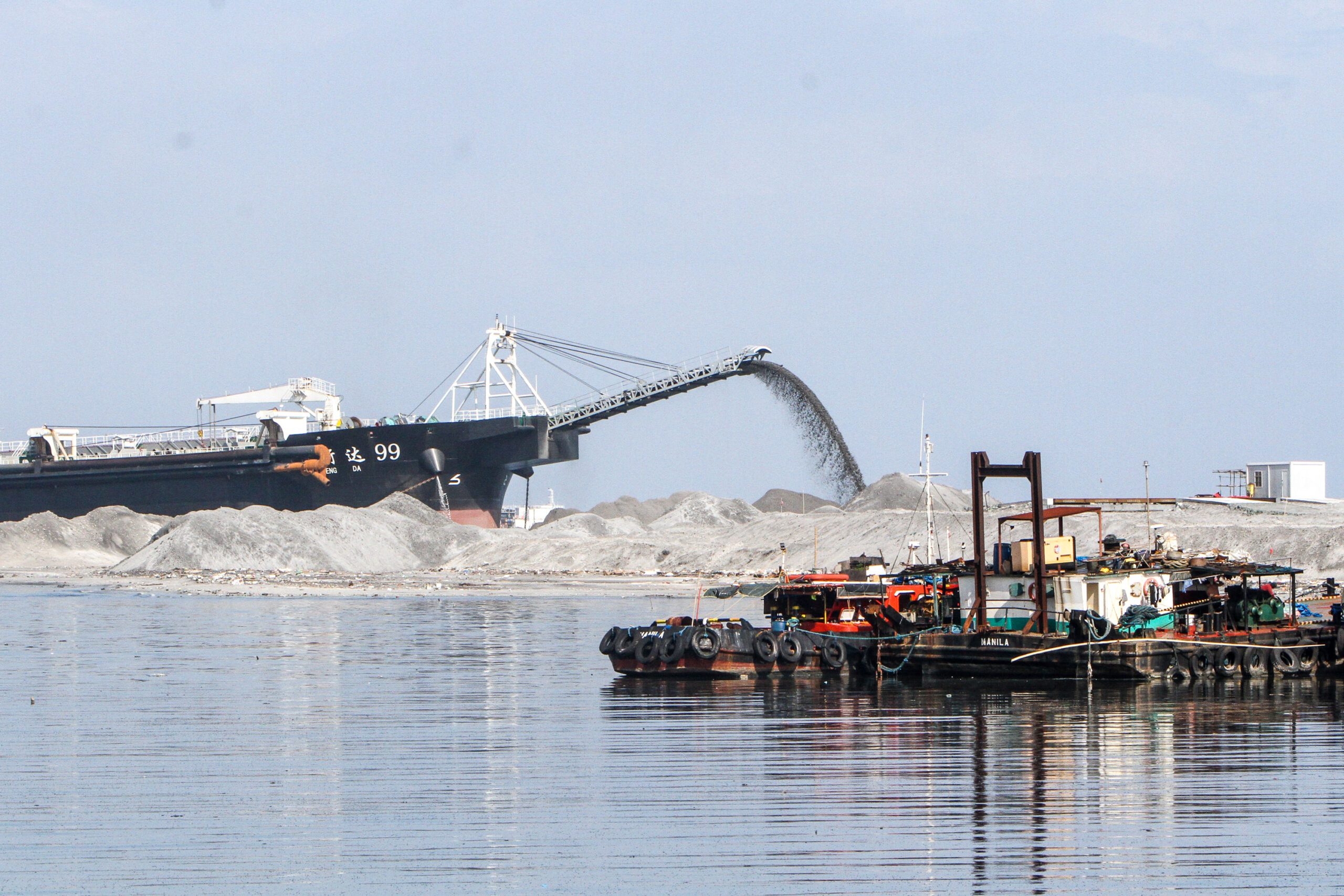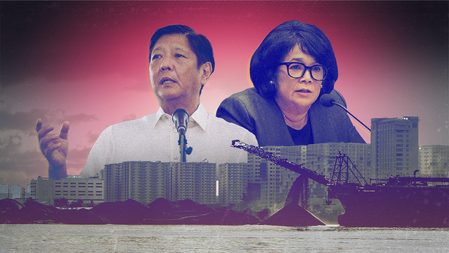SUMMARY
This is AI generated summarization, which may have errors. For context, always refer to the full article.

MANILA, Philippines – Questions were raised in a joint Senate hearing on Wednesday September 27, over the process of how reclamation projects in the country are approved.
During the hearing of the Senate committees on environment, natural, resources and climate change, joint with the committee on urban planning, housing and resettlement, Senator Cynthia Villar asked the process of how the Philippine Reclamation Authority (PRA) and the Department of Environment and Natural Resources (DENR) approve reclamations when some projects were overlapping or encroaching on areas declared as protected areas.
Villar’s main example was the P14-billion reclamation project of around 530 hectares of the coastline of Manila Bay in Las Piñas and Parañaque. The Supreme Court gave a go signal for the project to continue in 2021.
“How can an ECC be issued in a place which is declared as a legislated protected area and in the Ramsar list as one of the most important wetlands in the world,” said Villar. “I cannot understand that.”
Quizzing officials on the details of the process, Villar said there should be amendments in the application process. “There must be something wrong,” said Villar.
Senator Jinggoy Estrada asked if the whole process was observed religiously given the supposed water pollution and flooding caused by reclamations.
In a presentation, the DENR showed a flowchart of the process where the project proponent first seeks approval from the PRA.
The PRA serves as the “clearing house” of all reclamation projects in the Philippines. The DENR’s role, meanwhile, is the issuance of environmental compliance certificates (ECC). The ECC is a document that affirms a project’s compliance to environmental regulations in the country.
Reclamation projects, specifically those in Manila Bay, have caused a stir in the past months after President Ferdinand Marcos Jr. suspended them. While suspended, the DENR said it would conduct a review of the overall impact of the projects to the ecosystem of Manila Bay.
Powers of DENR secretary, EMB director
Project proponents should secure an ECC as part of their application.
Because the ECC can make or break the operations of a reclamation project, it becomes a big deal on who gets to an ECC.
According to Administrative Order No. 42 issued under the administration of former president Gloria Macapagal Arroyo, the director and regional directors of the Environmental Management Bureau (EMB) have the power to issue or deny ECCs.
This process was meant “to further simplify the requirements and streamline the processing of ECC applications.”
The DENR clarified during the Senate hearing that all ECCs issued were cleared with the DENR Secretary, whether he/she signed it or not. The EMB director can sign an ECC when the secretary delegates him/her to do so.
“There were times in the past that the Secretary himself would be the one signing the ECC. Some instances when he would delegate it to the EMB director but with his authority,” said Environment Undersecretary Juan Miguel Cuna, who served as EMB director under Roy Cimatu.
“The authority is delegated by the Secretary to the EMB director,” said DENR Assistant Secretary Gilbert Gonzales. “
Senator Koko Pimentel found the explanation unsatisfying. “‘Yung mga shared power ‘yan ‘yung mga hugas kamay eh. Kaya shina-share power para hindi natin ma-pinpoint sino ang responsible.” (Shared power help them clean their hands. They share power so we can’t pinpoint who is responsible.)
Cuna said the practice before was that after the EMB director signed the ECC, the document was then barcoded at the Office of the Secretary.
Limits of DENR’s power
Despite the reclamation projects in Manila Bay having obtained their respective ECCs, the environmental impacts of the reclamation projects are yet to be fully grasped by the government.
The DENR said during the House plenary debates on their 2024 proposed budget that there are 18 reclamation projects with ECCs. Two of these 18 projects already started reclamation activities before Marcos’ suspension.
DENR Secretary Toni Yulo-Loyzaga said during the Senate hearing that aside from the cumulative impact assessment, they are also reviewing the compliance of these projects to environmental regulations.
But can the DENR stop the reclamation projects once the studies reveal the projects are in violation of environmental regulations? Loyzaga said suspension is not within the ambit of the DENR’s powers. (READ: Reclamation projects impede gov’t duty to protect Manila Bay – Loyzaga)
“Our work would be recommendatory,” the environment secretary said.
The DENR is currently finalizing an agreement with scientists from the UP Marine Science Institute (UP MSI) and the Manila Observatory to conduct the assessment.
Laura David, director of the UP MSI, said they expect substantial results after six months of review and a completed assessment in the six months that would follow.
Lacking consultations with businesses
Application process for reclamations require consultations, in the form of public hearings and scoping, with communities and other entities that would be affected by the big-ticket projects.
However, representatives from certain sectors and businesses present in the meeting say they were not properly informed and updated of the projects going in the areas.
In the hearing were Ildefonso Tranqued of the Manila Yacht Club and Esteban Peña Sy owner of Sofitel Philippine Plaza.
Tranqued emphasized the maritime safety of vessels especially at night. “All of these obstructions and sand that have been put around the bay are hazards.”
“They don’t have any kind of lighting, they don’t have any kind of warnings,” he added. “There was not any information that was given to the club in terms of how these reclamations would be enforced.”
Obstructions like sandbars are not part of any geodetic map yet, Tranqued reminded. Navigational instruments in vessels will not detect these, he said.
The Manila Yacht Club was not the only one affected. The business of Sofitel Philippine Plaza had experienced flooding too, said Sy. The owner attributed the flooding to reclamation projects. Sy said air pollution caused by the reclamation in the area had made them double down on cleaning their pool.
“A lot of those establishments around the shore are victims of the present reclamation,” said Sy. – Rappler.com
Add a comment
How does this make you feel?















![[WATCH] Bamban POGO scandal: There’s a bigger fish than Alice Guo](https://www.rappler.com/tachyon/2024/07/inside-track-tcard-bamban-pogo.jpg?resize=257%2C257&crop=435px%2C0px%2C1080px%2C1080px)
There are no comments yet. Add your comment to start the conversation.